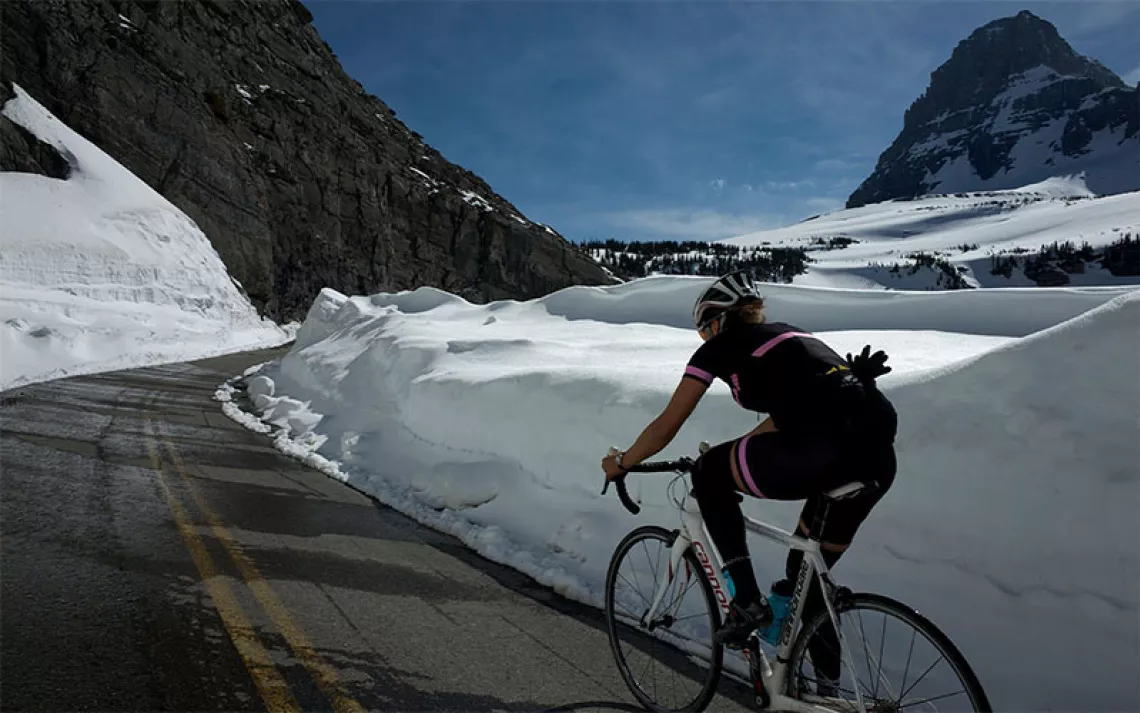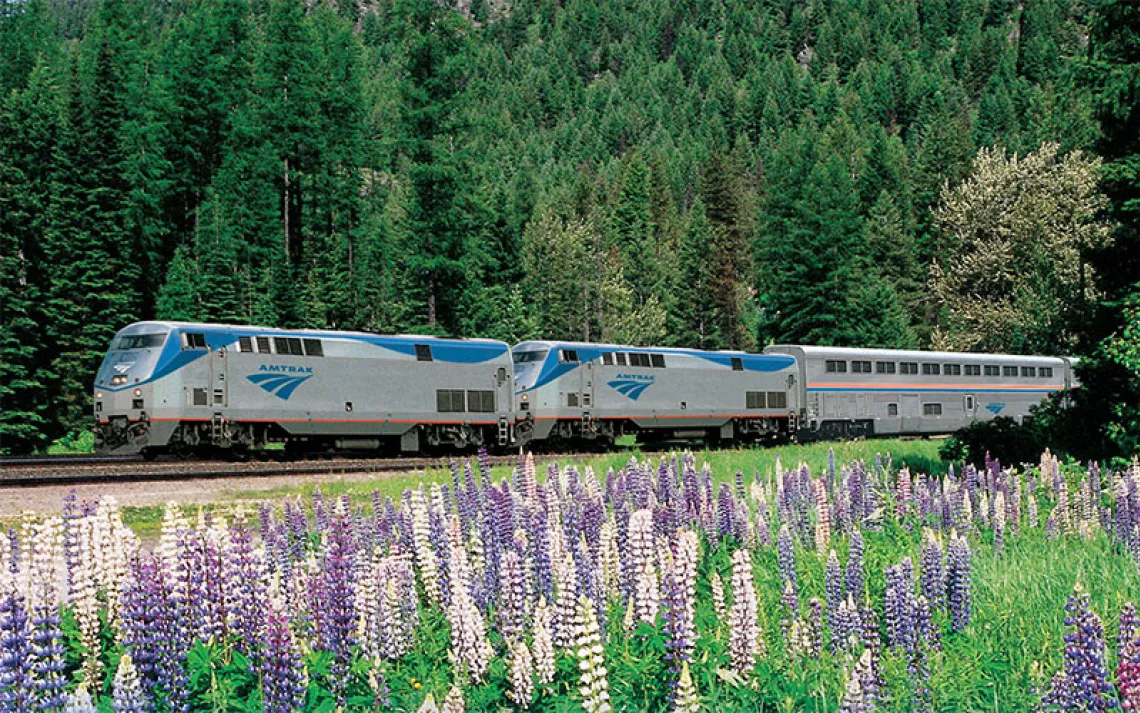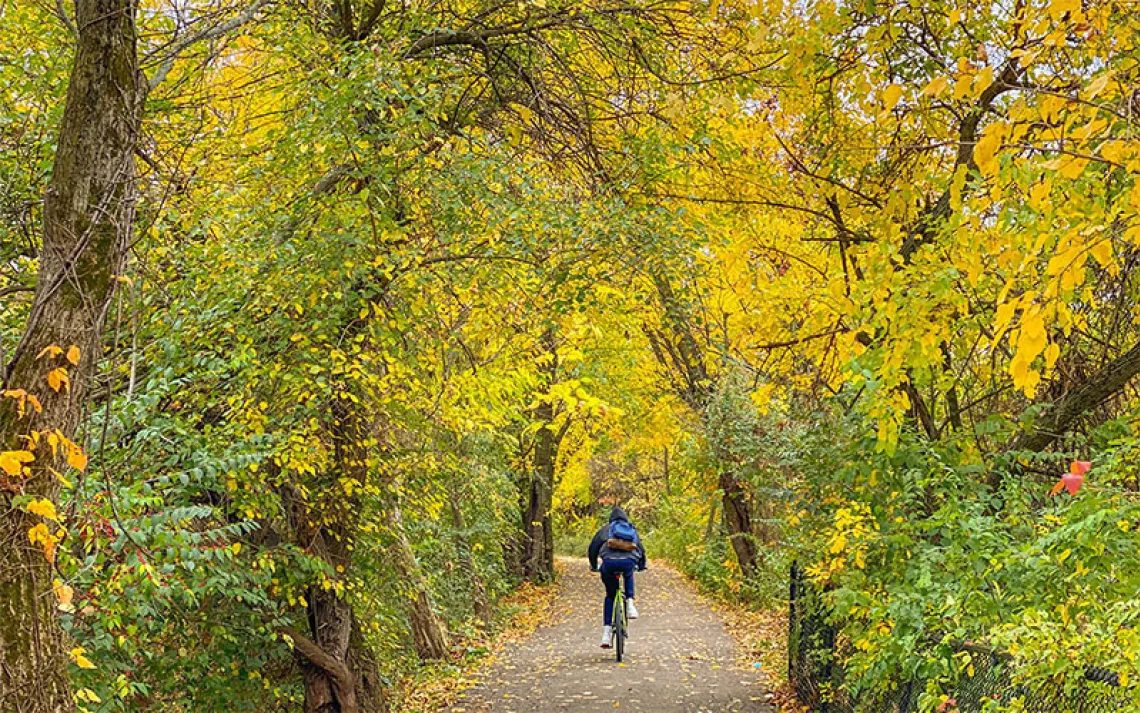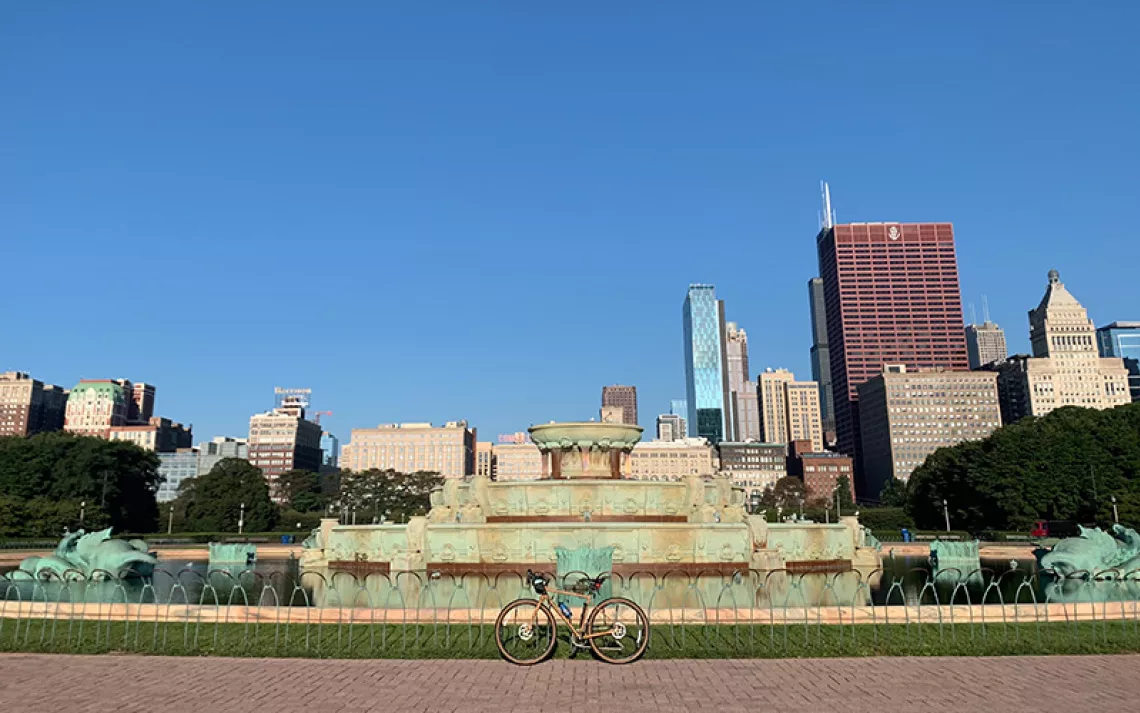Ride, Sollee, Ride
A cellist's self-propelled musical tour comes with flat tires, Clif Bars, and a lot of new friends
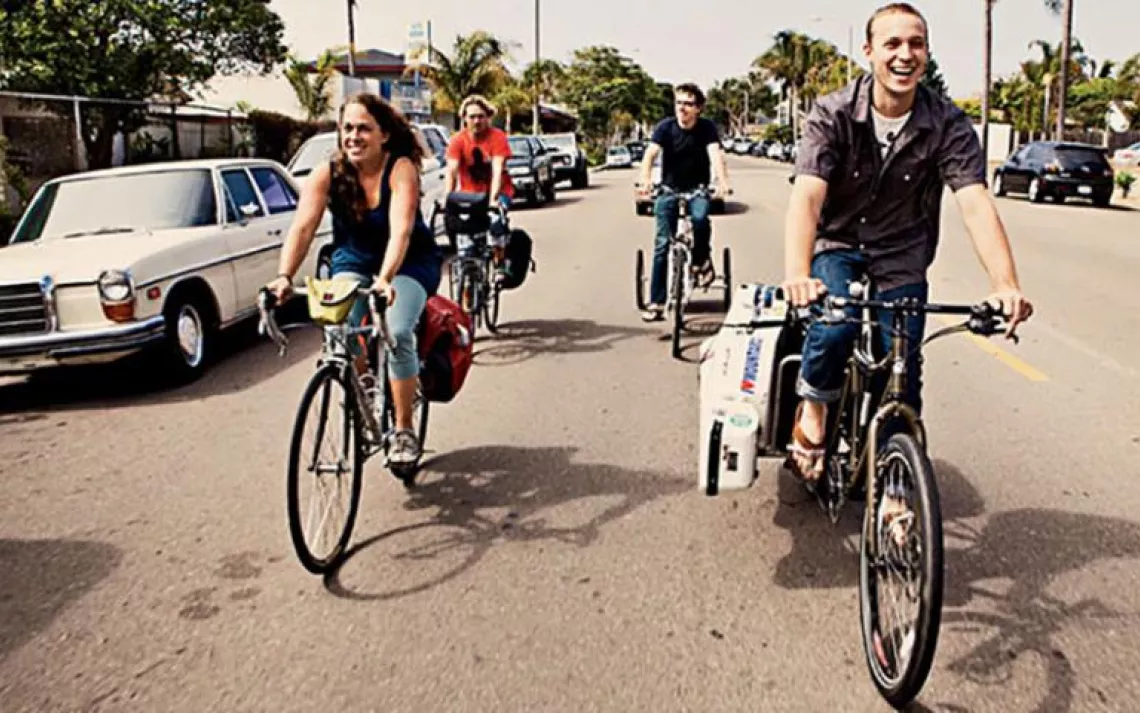
Sollee (right) and crew on the road in Encinitas, California.
IT'S A SUNNY DAY IN SOUTHERN CALIFORNIA, but the Los Angeles River bike path is largely empty. Which is good news for Ben Sollee, whose bike is weighed down with 124 pounds of gear. His cello bulges off to the side like a tumorous saddlebag. Tonight he has a gig at the Bootleg Theater in the L.A. neighborhood of Silverlake. Yesterday he performed in Long Beach.
Sollee, his drummer, and two friends ride in the shadows of freeways, beside the river's shallow, algae-covered water, through Compton, past golf courses and horse ranches. Los Angeles was made for the automobile, so this is an area rarely seen, even by residents. The manicured, well-marked path is a welcome change from the spotty bike lanes and aggressive drivers they've encountered since leaving San Diego two days and 130 miles ago.
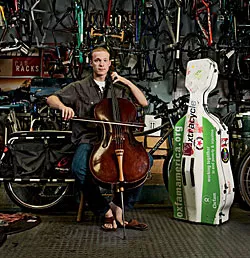
Sollee's legs aren't tired yet, but they will be. In the next 48 days, Sollee's three-phase "Ditch the Van" tour will pedal up the California coast to San Francisco, through eastern Colorado, and around a loop of rural Pennsylvania. In all, the group will haul their gear more than 1,500 miles and play shows almost every night. They will nearly be run off the road by a Winnebago on a cliffside highway south of San Francisco, pop 24 tires, and eat 30-plus pounds of Clif Bars, all in the name of a self-propelled musical tour.
Sollee, 27, had been a touring musician for 10 years before he decided to try a new means of transportation. His disarming Southern voice and percussive style on the cello combine for a genre-bending sound somewhere between R&B and folk. As a member of the Sparrow Quartet, he traveled through Europe and Asia. In America he partnered with banjo player and singer Abigail Washburn and drove from coast to coast in buses and vans, playing sold-out festivals as his fan base and CD sales grew. But the romance of the road began to wear thin, and Sollee started thinking about slowing things down.
One spring day in 2009, at home in Kentucky, he saw an ad on TV for an Xtracycle, an extended-frame cargo bike for hauling heavy loads. He bought one, strapped his cello to the side, and geared up to ride to the Bonnaroo music festival, 350 miles away in Manchester, Tennessee. He booked gigs along the way, so it wouldn't be a straight-shot ride, but Sollee had no idea what he was getting into. He'd never ridden a bike farther than eight miles before. His manager didn't think he'd make it.
That tour lasted nine days and led, three months later, to a slightly longer version along the southeastern seaboard, with drummer Jordon Ellis joining in. This, in turn, led to the Ditch the Van tour last fall and the ride along the Los Angeles River.
Many touring musicians plot out "tour markets" and play large venues that attract people from miles away. These venues often impose blackout periods prohibiting performers from playing anywhere else within striking distance for 30 to 60 days. "You have to go 300 or 400 miles to get to the next gig," Sollee said. "It just didn't seem right to me."
Sollee knew he couldn't play at these bigger venues and then ride his bike far enough with all that gear to make it past the blackout zones. So while he had the fan base for a traditional tour, he opted instead for what he calls "community-based touring," focusing on smaller venues like warehouses, bookstores, and schools. Now when they tour, Sollee and Ellis perform almost every night, usually after riding between 40 and 60 miles, for crowds of 30 to 40 instead of 500 to 600. Of course, playing for smaller crowds means playing for less money.
It takes them an hour and a half to ride an easy 16 miles on the Los Angeles River bike path. But when they steer back into the streets near South Central, they find themselves in a two-wheeling nightmare: industrial district, no bike lanes, asphalt littered with glass. They spend more than four hours and flatten four tires riding the remaining 11 miles to Silverlake.

Sign up to receive Sierra News & Views
Get articles like this one sent directly to your inbox weekly.
With this action you affirm you want to receive Sierra Club communications and may vote on policy designated by the Sierra Club Board.
As the sun sets over downtown L.A., they finally get to the Bootleg. Sollee and Ellis do a sound check and then hunker down between amps and panniers for a preshow nap. Fans begin to trickle in. A woman who'd heard about the biking cellist on National Public Radio a few years ago suddenly finds herself face-to-face with Sollee--and they chat about Disney World, of all things.
Community-based touring not only brings Sollee closer to the people who like his music but sometimes requires him to rely on them as well. Each night calls go out to friends, family, and fans, who inevitably answer with a bed, a meal, or both. This is all part of the plan: fewer hotels and more living rooms; fewer minibars and more kitchen tables.
If you hang out with Sollee long enough, you're bound to hear about his vision: "The idea is to have two or three really great artists put on professional, high-quality shows by bike. My hope is that as we ride through communities, people will ride along with us. Can you imagine how cool that would be? Roadies pulling lights and speakers, and then 60 people all riding from one gig to the next."
By the end of the tour, Sollee will have cleared enough money to convince himself to do it again. Next time, though, he plans to be on the road for only three weeks, compared to his current two-month marathon. Logistics, preparation, and performance are exhausting enough, even without a day's worth of cycling. And after all, playing music and riding a bike are supposed to be fun--even if it is how you make your living.
But for now, as the lights dim in the Bootleg and silence descends on the 30 or so people, all in what would be considered front-row seats at a major venue, Sollee pulls his bow across the strings, and a smile spreads across his face.
 The Magazine of The Sierra Club
The Magazine of The Sierra Club
